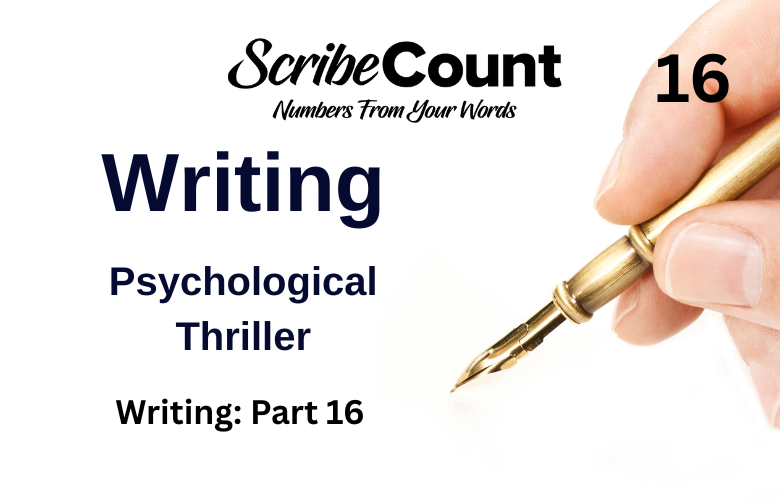Psychological Thriller for Indie Authors: Writing a Mind-Bending Tale of Suspense and Obsession
Psychological thrillers plunge readers into the minds of characters unraveling under pressure—stories where reality twists, motives are hidden, and the biggest threat is often internal. These are not tales of monsters lurking in the dark; they are about the monsters within. The genre thrives on paranoia, uncertainty, and the chilling realization that the protagonist might not be as reliable—or as innocent—as they appear.
Unlike action-packed thrillers that rely on explosions and chase scenes, psychological thrillers seduce readers with emotional tension, mental manipulation, and slow-building dread. The danger often stems from obsession, trauma, gaslighting, or buried secrets. For indie authors, the psychological thriller presents a uniquely intimate genre where the line between hero and villain can dissolve entirely—and where the biggest shocks come not from outside threats, but from inside the human mind.
Writing a psychological thriller requires a deep understanding of human behavior, an ability to layer tension over time, and a strong command of narrative structure. This guide will walk you through the emotional stakes, essential elements, and story architecture that will help you craft a tightly wound, unforgettable thriller.
What Makes a Psychological Thriller Novel?
A psychological thriller explores the unstable or delusional mental states of its characters—typically in a setting where a crime, mystery, or personal threat drives the narrative. What sets the genre apart is its emphasis on the inner world: motivations, fears, secrets, memory, perception, and trauma.
These stories often center on protagonists who are unreliable, flawed, or slowly unraveling under pressure. The reader becomes a detective—not just of the mystery, but of the narrator's mind. That deep psychological intimacy, paired with high emotional tension, is what gives psychological thrillers their signature intensity.
Plot twists are common, but they must emerge naturally from character development. Suspense builds not from explosions or fight scenes, but from carefully escalating paranoia, manipulation, obsession, and psychological games. Often, the reader is just as uncertain of the truth as the protagonist is—and that uncertainty becomes the hook that keeps pages turning.
The genre often intersects with crime fiction, domestic suspense, horror, or literary fiction, but it always centers on psychological conflict as the driving force.
The Popularity of Psychological Thrillers
Psychological thrillers dominate bestseller lists across formats and publishing platforms. The genre’s global popularity surged with the success of Gone Girl by Gillian Flynn (available on Amazon), The Girl on the Train by Paula Hawkins (available on Kobo), and Before I Go to Sleep by S.J. Watson (available on Apple Books). These stories captivated readers with layered characters, twisty plots, and a constant question: who can be trusted?
The rise of domestic noir—thrillers set inside homes, marriages, and personal relationships—brought the genre even closer to readers’ own lives. TV adaptations like You, Sharp Objects, and Behind Her Eyes have further fueled the audience’s appetite for psychological tension and morally ambiguous protagonists.
For indie authors, this genre offers a powerful niche. Psychological thrillers don’t require sprawling casts or exotic settings. What they require is emotional depth, character-driven suspense, and the ability to plant questions in the reader’s mind that they must keep reading to answer.
Reader Expectations for Psychological Thrillers
Psychological thriller readers expect a high level of emotional and intellectual engagement. They’re not just looking to be scared—they want to be unsettled, surprised, and challenged. They want layered characters who hide things from themselves and others. They expect tension to grow gradually, relentlessly, until they can’t look away.
One of the most important reader expectations is the unreliable narrator. Whether due to trauma, manipulation, addiction, or deception, the main character’s view of reality is not fully trustworthy—and readers love trying to parse what’s real and what’s not.
They also expect deep psychological stakes. This genre is built on fear—not of monsters, but of betrayal, isolation, madness, or self-destruction. The threats may be subtle, but they must feel intimate and inescapable.
Structure matters immensely. Readers expect twists—but not cheap tricks. The best psychological thrillers reward close reading and drop subtle clues that only make sense in retrospect.
Above all, readers crave ambiguity. They want to be unsettled. They want to question the truth. They want to experience the quiet horror of realizing that the real danger isn’t outside the protagonist—it’s inside.
Common Tropes in Psychological Thriller Novels
While psychological thrillers thrive on originality, they often build on familiar tropes that readers love. The key is using these elements to enhance your themes and keep readers guessing:
-
The Unreliable Narrator: The protagonist may be lying, manipulated, or mentally unstable. Think Before I Go to Sleep by S.J. Watson (available on Barnes & Noble).
-
The Gaslighting Partner: A spouse or lover convinces the protagonist that they’re imagining things. Often leads to isolation and mental breakdown. See The Silent Patient by Alex Michaelides.
-
The Buried Memory: Trauma has obscured a key event from the past, and recovering it is the key to the truth. See Sharp Objects by Gillian Flynn.
-
The Doppelgänger / Identity Swap: Mistaken identity, false personas, or dual lives drive suspense and paranoia. The Girl on the Train features this element in subtle form.
-
Locked-In Settings: The protagonist is trapped—physically or emotionally—whether in a marriage, institution, or small town. Isolation heightens the tension and uncertainty.
-
The Twisted Ending: A final reveal reframes everything the reader believed about the story—if done well, it’s both shocking and inevitable.
Structuring Your Psychological Thriller Novel: The Plot Map
Use this outline to structure your psychological thriller, building tension steadily and layering in twists while preserving the emotional core:
-
Fragile Stability: Introduce the protagonist’s life. Everything seems normal, but something’s not quite right—strange behavior, a missing memory, or emotional detachment.
-
Disturbance: A triggering event disrupts the protagonist’s perception of reality. It may be a murder, a betrayal, a note from the past, or an unexplained encounter.
-
Unraveling: The protagonist begins digging—and unraveling. Paranoia sets in. They begin to doubt others, then themselves. The emotional tension escalates.
-
False Truth / Misleading Climax: A moment where it seems like the mystery has been solved, but it’s a lie—one the protagonist may believe. This gives a moment of false resolution before the real truth surfaces.
-
The Realization: The protagonist confronts the truth, often with devastating consequences. The twist is revealed. Whether they survive mentally, emotionally, or physically depends on the tone of the book.
Final Thoughts for Indie Psychological Thriller Writers
Writing a psychological thriller means walking a tightrope. You must deliver suspense without relying on violence. You must surprise readers without tricking them. And you must delve deep into the messy, uncomfortable parts of the human mind—while still offering a story that compels from start to finish.
As an indie author, you can take risks. You can explore darker, quieter, or more nuanced territory than traditional publishing might allow. You can write protagonists who aren’t likable but are undeniably fascinating. You can play with form, voice, and perception—so long as the emotional thread stays taut.
Remember: your job isn’t just to entertain. It’s to unnerve. To make the reader question every page, every motive, every truth. And in the best psychological thrillers, the final twist isn’t just in the story—it’s in the reader’s own mind.

